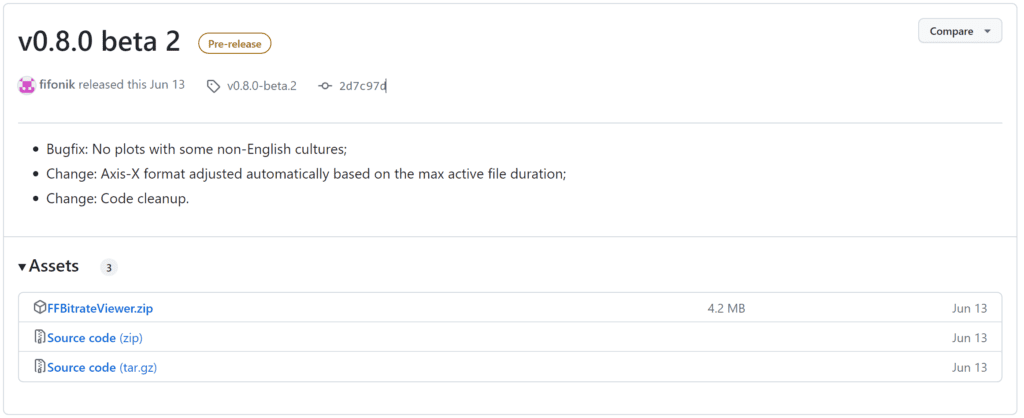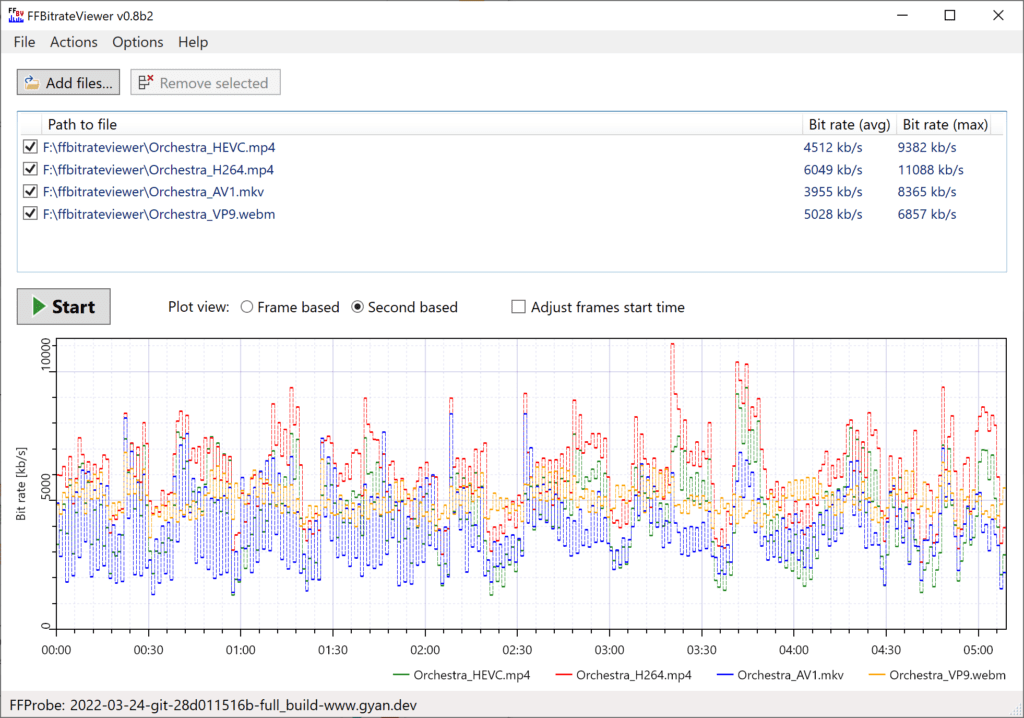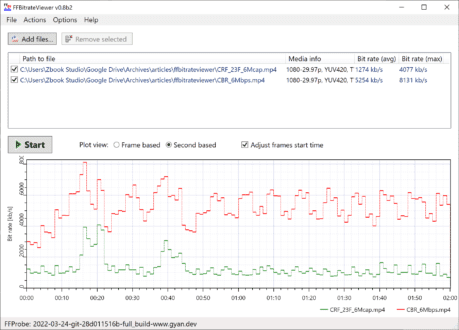Recently I was asked to visually illustrate the data rate difference between two HEVC files, one encoded with CBR at 6 Mbps, the other using capped CRF with the same cap. Of course, everyone’s go-to bitrate visualization viewer has always been Bitrate Viewer, which does a great job displaying the bitrate of a single H.264-encoded file. Unfortunately, it can’t input any codecs newer than H.264, and only displays a single bitrate at that.
Then I remembered a program a buddy had shared with me called FFbitrateViewer, which was free and open source. It also can input multiple files and most newer codecs supported by FFprobe, including AV1 (Figure 3). That’s what I used to produce the graphic above.
FFbitrateViewer is a Windows-only program written by fifonik, who also wrote FFMetrics, which you can read about here. You can download the FFbitrateViewer v0.8.0-beta.2 here. It’s a bit hard to find if you don’t speak GitHub, so I’ve included the screen as Figure 2.
Download the zip file FFBitrateViewer.zip on the bottom left and unzip it. Click on FFbitrateViewer.exe in the extracted folder to run the program. Note that you must install Microsoft’s .NET framework to run FFBitrateViewer.

Program operation is simple; you add files by selecting them via the Add files button or by dragging them into the top window. Press Start to run FFProbe and display the bitrates. You have two visualization options; frame-based and second-based. I found second-based more useful, but your experience may vary. Shades of Bitrate Viewer, you see the average and max bitrates for each file on the top right.
You can load multiple files, but when displaying more than one or two files, I found the visualization much less useful. You see this in Figure 3, where the program displays HEVC, H.264, AVI, and VP9-encoded files simultaneously.
You hate to criticize a free product, but it feels like this interface could be much more useful with a few simple changes, like displaying the average bitrate in a smooth curve. Bitrate Viewer is a good template here. That said, for single-file bitrate visualizations, it’s quite functional as is.

Once computed, you can click Ctrl + C to copy the plot only to the clipboard and click Ctrl + S to save the plot to disk as either a PNG or SVG file. I saved the Frames plot to disk and display it as Figure 4. Click the image to display it at full resolution.
You can de-select files to display in the plot view via the checkbox on the left of each file. To remove files, click them in the top window, and then click the Remove selected button.

Overall, because the bitrates of my CBR and capped CBR file were so disparate, FFBitrateViewer worked well for this discrete task, and certainly it’s great for a single file for any supported codec. It’s definitely worth checking out for your Windows computers, though hopefully, fifonik will invest a bit more time to make the multifile visualization more useful.
 Streaming Learning Center Where Streaming Professionals Learn to Excel
Streaming Learning Center Where Streaming Professionals Learn to Excel









